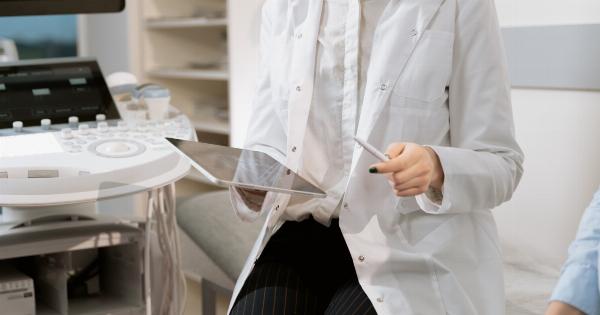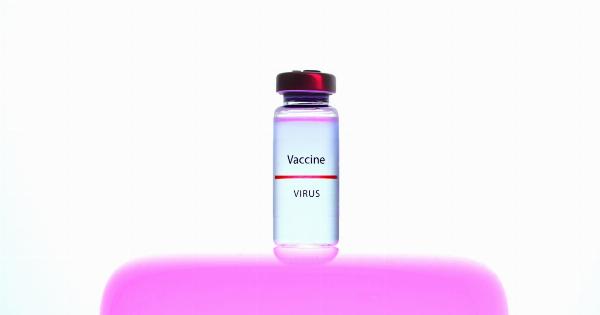Warts are small, rough growths that can appear on any part of the body.
They are caused by the human papillomavirus (HPV), a highly contagious virus that can be transmitted through direct contact with an infected person or through contact with surfaces that have come into contact with the virus.
Understanding HPV
Human papillomavirus (HPV) is a group of over 100 different viruses. It is the most common sexually transmitted infection (STI) in the world. HPV can be classified into two categories: low-risk HPV and high-risk HPV.
Low-risk HPV
Low-risk HPV strains do not usually cause serious health problems. However, they can lead to the development of common warts, genital warts, or other non-cancerous growths.
Common warts can appear on the hands, fingers, or other parts of the body, while genital warts specifically affect the genital and anal areas.
High-risk HPV
High-risk HPV strains are more concerning as they are associated with the development of certain types of cancer. In women, high-risk HPV can cause cervical, vaginal, or vulvar cancer. In men, it can lead to penile or anal cancer.
It can also cause cancers of the head and neck in both genders.
Warts: Common Types and Symptoms
There are several different types of warts, each with their own distinct symptoms:.
1. Common Warts
Common warts are usually small, rough growths with a rough texture. They often appear on the hands, fingers, elbows, and knees.
2. Plantar Warts
Plantar warts specifically appear on the soles of the feet. They can be painful and tend to have a hard, thickened skin surrounding them. Walking or standing can cause discomfort.
3. Flat Warts
Flat warts are small, flat, and smooth. They typically appear in large numbers, resembling a cluster of tiny pinheads. Common areas of occurrence include the face, neck, and hands.
4. Genital Warts
Genital warts are sexually transmitted and appear on the genital and anal areas. These warts can be small and flesh-colored or have a cauliflower-like appearance. They may cause itching, pain, and discomfort.
How does HPV cause Warts?
HPV enters the body through cuts or breaks in the skin and infects the top layer of skin cells. The virus causes the cells to divide rapidly, leading to the formation of a wart.
The HPV-infected skin cells can be shed and spread to other parts of the body or to other individuals.
HPV Transmission
HPV is primarily transmitted through direct skin-to-skin contact with an infected person. It can be spread through sexual intercourse, anal sex, oral sex, and even through non-penetrative sexual activities.
It is also possible to get infected with HPV by sharing personal items such as towels or razors with an infected person.
Prevention and Treatment
While there is no cure for HPV itself, there are ways to prevent and treat warts caused by the virus:.
1. Vaccination
Getting vaccinated against HPV is one of the most effective ways to prevent infection. The HPV vaccine is recommended for both males and females, starting as early as age 9. It is most effective when administered before sexual activity begins.
2. Safe Sexual Practices
Practicing safe sex, including the use of condoms and dental dams, can greatly reduce the risk of HPV transmission. However, since HPV can infect areas not covered by condoms, complete protection is not guaranteed.
3. Regular Screenings
Regular screenings such as Pap smears for women and anal Pap smears for men who have sex with men can help detect HPV-related abnormalities or precancerous cells early, allowing for timely treatment.
4. Treatment for Warts
There are various treatment options available for warts caused by HPV. These include topical medications, cryotherapy (freezing), laser therapy, and surgical removal. The best treatment option depends on the type of wart, its location, and severity.
The Importance of Early Detection and Treatment
Early detection and treatment of HPV-related warts and abnormalities are crucial in preventing the progression to cancer.
Regular check-ups with healthcare professionals and practicing safe sexual behaviors can aid in early identification and timely intervention.
Conclusion
Warts are common growths caused by the human papillomavirus (HPV). While some warts are harmless, others may lead to more serious health concerns, including cancer.
Understanding the connection between warts and HPV is important for prevention, early detection, and appropriate treatment. By practicing safe sexual behaviors, getting vaccinated, and seeking medical advice when necessary, we can reduce the risk of HPV transmission and minimize the impact of warts on our health.






























